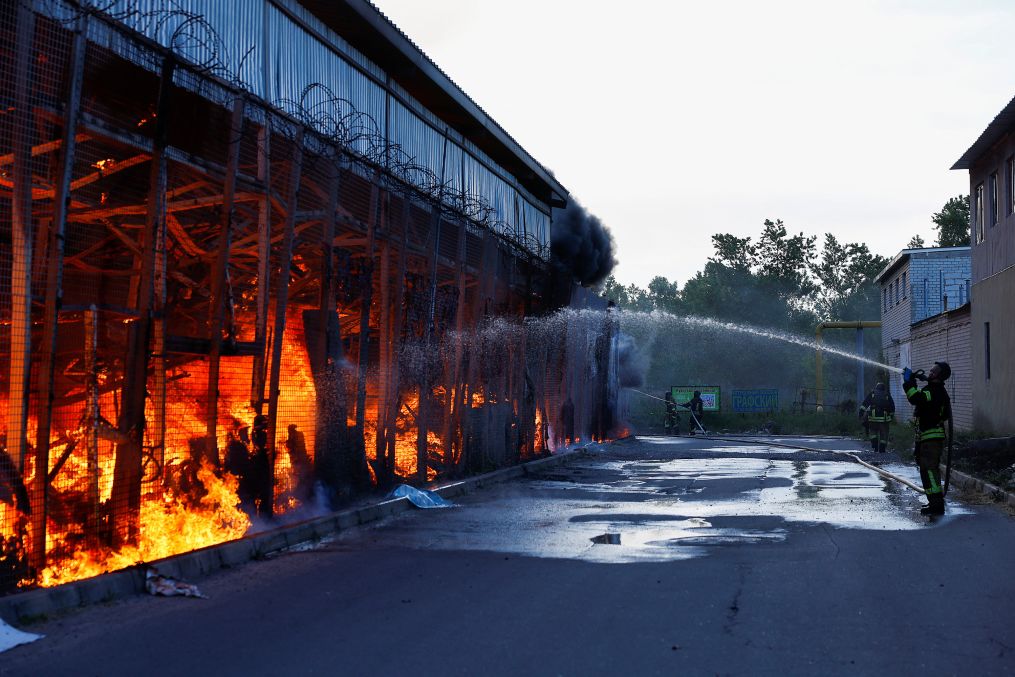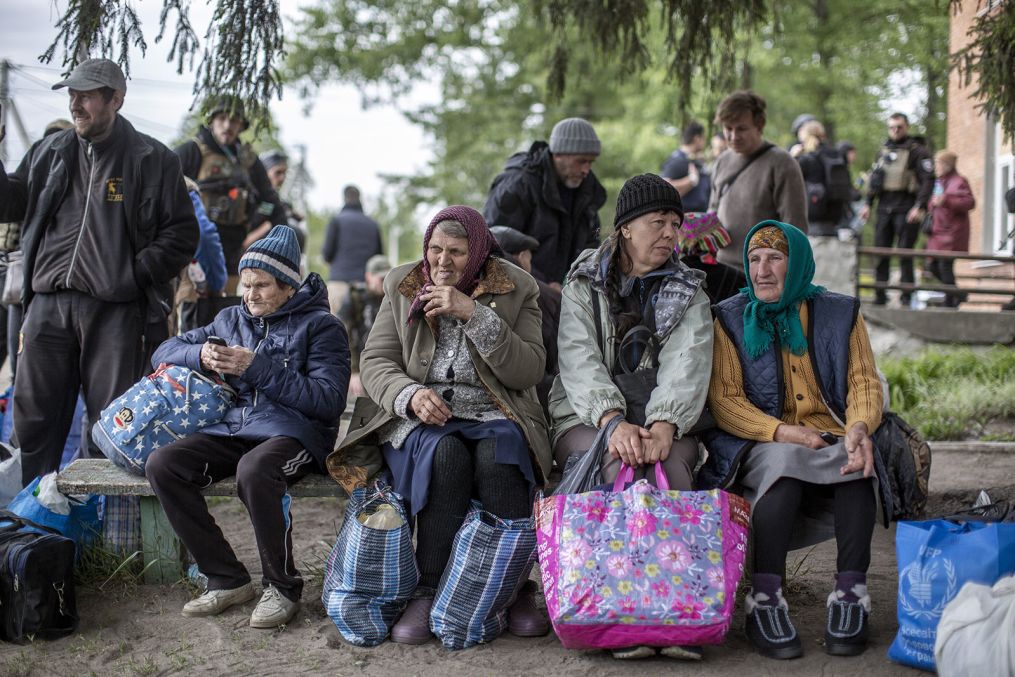The United States has authorized Ukraine to use its weapons to attack inside Russia, but this is unlikely to change the rules of the game (Analysis)

(CNN) — The story of the past 27 months since Russia began its invasion of Ukraine has been one of the breaking of taboos. After repelling Russia’s initial assault on Kiev, Ukraine has asked its Western allies for increased support: first ammunition, then tanks, then cluster munitions, then fighter jets.
On each occasion, the West has debated whether or not to accept Kiev’s latest request, fearing an escalation of the dispute and a possible Russian response. On each occasion, taboos have been broken, and nothing has happened. What seemed incongruous one week becomes normal the next.
But the rhythm of deliberations and delays is hard to break. Despite receiving more weapons from the United States last month, Ukraine has not been able to use them as intended. When Moscow launched its surprise attack on the northeastern Kharkiv region this month, Washington blocked Kiev from using US weapons to strike targets inside Russia.
That, too, fell apart. This week, President Joe Biden allowed Ukraine to carry out limited strikes with American weapons on Russian territory around Kharkiv, after several European countries lifted bans on the use of weapons supplied to Kiev.
“In recent weeks, Ukraine has come to us and asked for permission to use the weapons provided to it to defend itself against this aggression near the city of Kharkiv, including against Russian forces accumulating on the Russian side of the border,” US Secretary of State Antony Blinken announced on Friday during a visit to the Czech capital Prague. He confirmed that Biden had approved Ukraine’s request.
Ukrainian President Volodymyr Zelenskyy described the decision as a “step forward” that would allow his forces to defend the besieged Kharkiv region.

Workers search the remains of a store destroyed by a Russian missile strike in Kharkiv, Ukraine, on May 26, 2024. Credit: Kostiantin Liberov/Libkos/Getty Images
Although the decision could mark a new phase in the war, analysts wonder whether the new freedoms will significantly strengthen Ukraine’s ability to repel Russian aggression.
Some are optimistic. This month, calls for the United States to lift sanctions have grown louder, as Russia continues to bomb the city of Kharkiv with missiles and expand its grip elsewhere in the region.
In an op-ed on CNN, Adam Kinzinger and Ben Hodges described the strange effect of the American taboo: “We have repeatedly heard Ukrainian soldiers tell stories of attacking Russian troops, being repulsed, and retreating to safe Russian territory to regroup, get a hot meal, make a plan, and attack again.”
“Ukraine cannot win if Russians can impunity for attacking civilian targets and calling a ‘time out’ on its territory,” he wrote, urging Biden to call out his Russian counterpart Vladimir Putin’s deception.
But military analysts’ hopes have been dampened, as the United States has remained adamant about not allowing Ukraine to use the most formidable ammunition it has been given to fire at Russia: long-range missiles known as ATACMS that can hit targets up to 300 kilometers (about 200 miles) away.
Instead, Ukraine can only use short-range missiles called GMLRS, which have a range of about 70 kilometers (about 40 miles).

Firefighters work at a hardware store attacked by Russian aerial missiles in Kharkiv on May 25, 2024. Credit: Valentin Ogirenko/Reuters
Katerina Stepanenko, an analyst at the Institute for the Study of War in Washington, told CNN that the policy change would “minimize” Russian aggression in Kharkiv but would still “preserve most of Russia’s sanctuary space.”
“The policy continues to be to adequately secure Russia’s operational and deep rear, so this shift near Kharkiv Oblast is insufficient to bring about a decisive turning point in the war. Ukraine particularly needs the ability to attack deep rear areas to defeat Russian ground and air threats, as there are many Russian airfields supporting attacks on Ukrainian cities that are outside the permitted range of the GMLRS,” he said.

Elderly Ukrainians wait to be evacuated from the city of Vovchansk in the wake of Russia’s advance into the Kharkiv region, on May 20, 2024. Credit: Narciso Contreras/Anadolu/Getty Images
Franz-Stefan Gady, a research associate at the International Institute for Strategic Studies, told CNN that the GMLRS cross-border attacks would allow Ukraine “to strike at some Russian assembly areas, command and control centers, as well as supply depots. This will not stop but it will complicate Russian military operations against Kharkiv”.
He added, “We should be realistic about what to expect from this policy change, as the Russian armed forces have already adapted to the introduction of ground-based precision fires.”
Mathieu Bouleg, a researcher at the Centre for European Policy Analysis, said the policy change would allow Ukraine to be “more efficient in deterring attacks and repelling preemptive strikes.”
“This is not a game changer in itself. It is a supplement, a steroid, an additional reinforcement for Ukraine to defend itself,” he said.
The red lines are blurred
The US has joined Britain, France, Germany and other countries in lifting restrictions on the use of weapons obtained by Ukraine.
Before Biden gave the green light, Putin had issued veiled nuclear threats to countries considering allowing Ukraine to attack Russia with its weapons. He warned that the move could have “serious consequences”, especially for “small and densely populated countries”.
Besides issuing nuclear threats, Putin also signaled earlier this month that he was open to peace talks.
“All these false stories were deliberately aimed at dissuading Western decision makers from allowing Ukraine to confront Russia’s attack on the city of Kharkiv,” Stepanenko said.
Although the lifting of the taboo appears to mark a new chapter in the war, Russia has previously confronted Ukrainian attacks with Western weapons on territory it considers its own.
Ukraine has frequently attacked occupied Crimea, which Russia annexed in 2014, using “Storm Shadow” missiles provided by the United Kingdom.
Ukraine also launched attacks on Kharkiv and Kherson in late 2022, as it attempts to liberate Russian-occupied territories in the first weeks of a full invasion.
In both cases, Russia warned Ukraine and its Western allies not to cross their red lines. In both cases, Ukraine and its Western allies ignored the warnings.
“The Kremlin already regards the attacks on occupied Crimea and the Donetsk, Luhansk, Kherson and Zaporizhia provinces as ‘attacks on Russia,’ but the reality is that there is little Russia can do to escalate its war in Ukraine without running a huge risk,” Stepanenko said.
— CNN’s Alex Marquardt, Jennifer Hansler, Kylie Attwood, Niamh Kennedy and Anna Chernova contributed to this report.
(tagstotranslate)US weapons